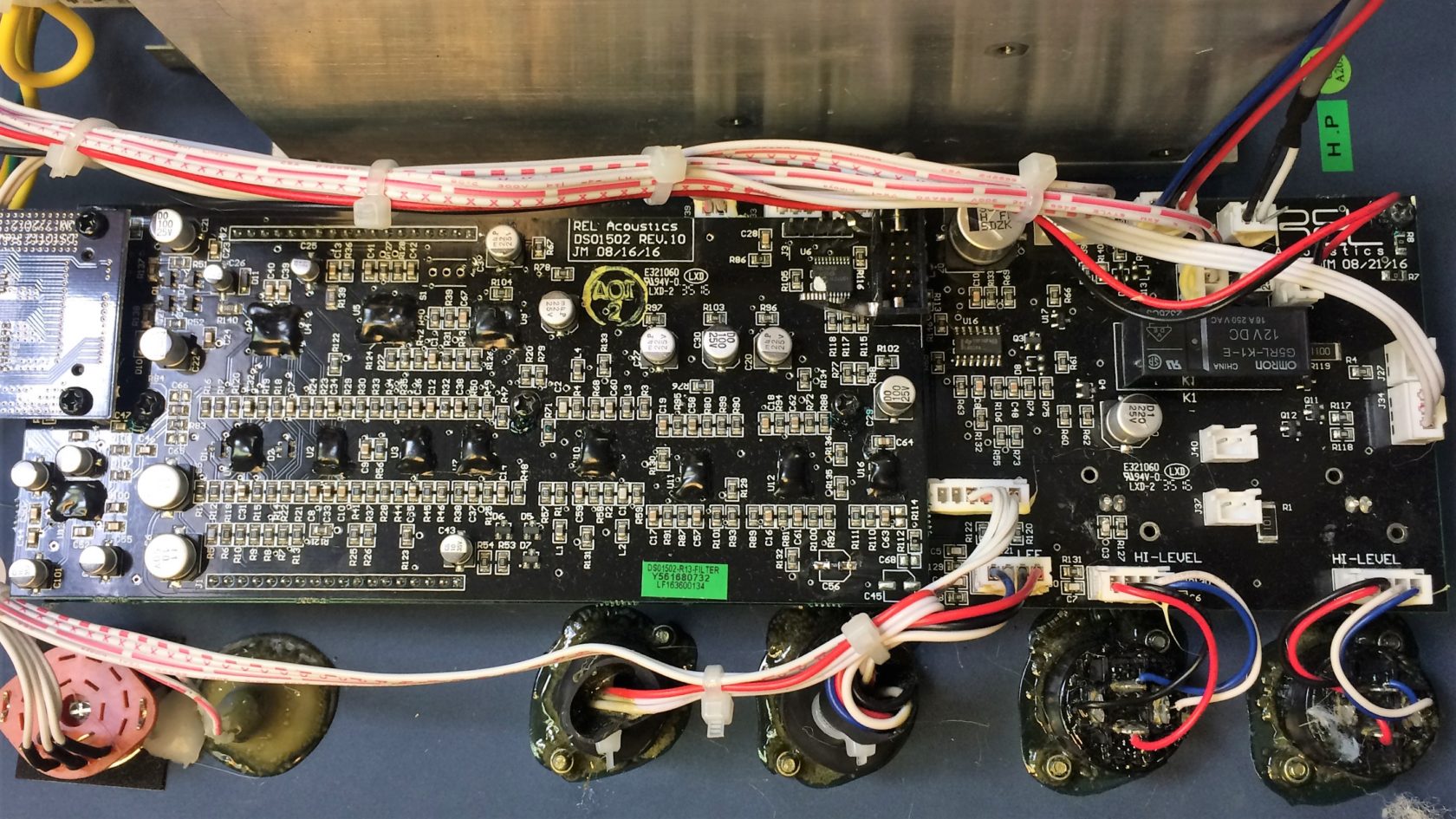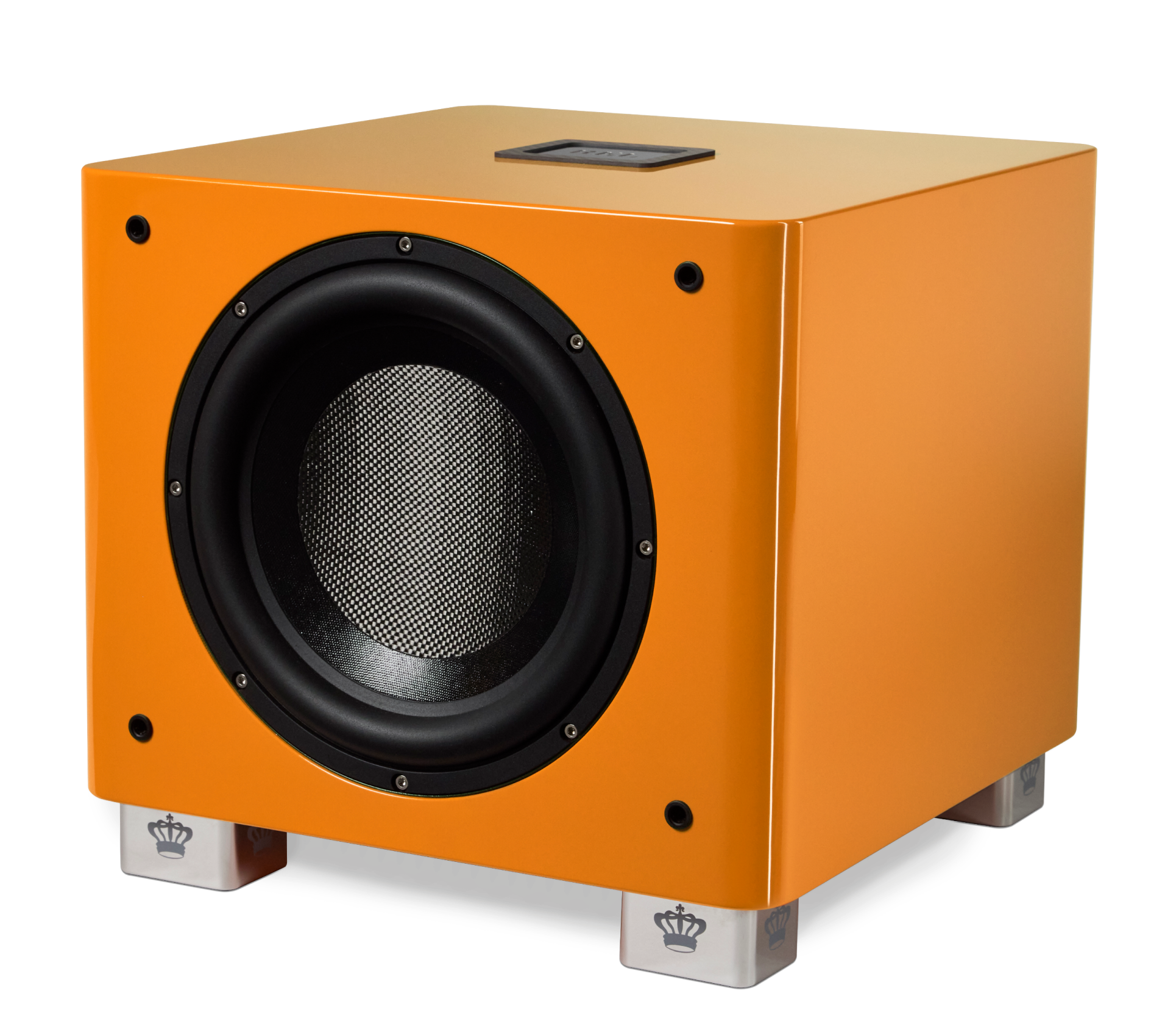Blog
Cold Filtered, Hot Performance
Dive into the No. 25 Parametric Filter

“Every sub should have two of these,”-Hunter
“I just wish we could afford to put these into every one of our designs, unfortunately great filters are not cheap and they take up a significant amount of space inside—something always at a premium inside of powered subwoofers,” John Hunter our Head of Design said recently. “These” turn out to be parametric filters, which sound oh-so- technical but once you realize how they work and the wonderful sonic benefits they confer you too will wish you had access to the filter suite found inside our No. 25 flagship.
“Many of our engineering leaps forward come about from real world experiences we encounter in the field,” said Hunter. This is because we work in a lot of rooms that are new to us, from international trade shows on 3 continents, to dealer showrooms and the occasional special client’s room, REL spends more time in the field experiencing the qualities of our products first hand than most companies 10 times our size. We run into all of the challenges and issues possible when we work in the field. Given the amount of time spent in the field, it’s more like owning a high level automotive race team than an audio engineering firm.
What we found in the field is that almost every room has a dip in response somewhere in the 20-30Hz region and almost every room has mid-to-upper bass transition peaks that can make the bass sound peaky or boomy. Two parametrics allow you to quickly eliminate BOTH of these traditional room issues, and once you get used to it you will never want to go back.
Parametric refers to the parameters that govern all filters. Rather than being a fixed filter (such as a speaker crossover that sets roll off at a specific frequency, a parametric allows 2 or more parameters to be adjusted. The three variables are frequency, the amount of cut or boost needed, and the “Q” which is a tricky term to define but think of it as controlling the peakiness/sharpness (or gentleness) of a filter. A narrow filter sounds peakier, a broader filter provides a wide range of affected frequencies and we pre-selected a Q that falls in the middle based on years of experience in the field.
In our No. 25—and any future designs we can afford to install one into–we provide 2 fully kitted out parametric filters, each one permitting up to 6 dB of cut or boost, that’s a huge amount of adjustment. We also allow the frequency to be varied over a range between 20 and 80 Hz.
How do you practically use all this variability? It’s so simple in use. First, turn on power to the parametrics using the toggle switch on the rear panel of the No. 25 powered subwoofer. We ship them turned off to prevent confusion for new customers. Next, flick the remote’s EQ switch to the left (E1 will light up) and increase the gain a lot to make it easier to hear at the beginning. Playing music that you know well and that has significant amounts of truly deep bass, preferably deep drum because we respond more accurately to bass dynamics rather than steady state tones such as a pipe organ produces, turn the knob 6 clicks up, which translates to a full 1dB. While this sounds like very little, you would be surprised by how much it is. Next vary the frequency and listen for the frequency that produces the lifts in the deepest bass. In our
Next, switch the remote’s EQ switch over to E2—the second parametric is now active. Set this one’s gain control to –6 clicks and vary the frequency, staying ABOVE the crossover frequency you have already set during your initial set-up of the No.25. In our room, our reference speakers cross over at 37Hz and so we swept from 60 Hz down to 38 Hz. The correct frequency is the one that provides a gentle cleaning up of the main crossover and by careful adjustment of gain and frequency quickly revealed itself to be 42 Hz and just 3 clicks down for a total of –1/2 dB at 42 Hz. When it’s perfectly adjusted, you can pick out subtle, quiet details waaay up in the upper midrange—it’s just amazing how a great subwoofer can have such a profound effect on the entire listening experience.
Writing those last few paragraphs took roughly ten times longer than actually performing the adjustment in a real system. Trust your ears, don’t over boost or overly reduce the output—No. 25’s are awfully fine designs even without these adjustment possibilities. Having set-up 30-40 in the field, I have yet to use more than 5 clicks up or down in real world practice. Having said that, the incredible “rightness” the system takes on is incredible. An old mentor taught me early on to trust design changes that produce benefits in two seemingly opposite ways, those are always true improvements. When an adjustment to a phono cartridge produces sound that is both warmer AND more naturally detailed, you can trust you nailed your set-up. Similarly, when using our new parametric filters feeling the deep bass in your room take on a solidity and dimensional palpability while realizing there is an almost supernatural quietness in the upper regions of your system alerts you to a new standard of performance. These are the results we get from running our “racing team”. It’s just one more way we relentlessly keep pushing the boundaries of what is possible. Enjoy the music, enjoy the theater.











